The best Marvel '70s characters left to adapt to the MCU
Shang-Chi, Eros, Man-Thing, Moon Knight, and Blade have already made the jump from Marvel Comics. Who from the '70s is next for the MCU?
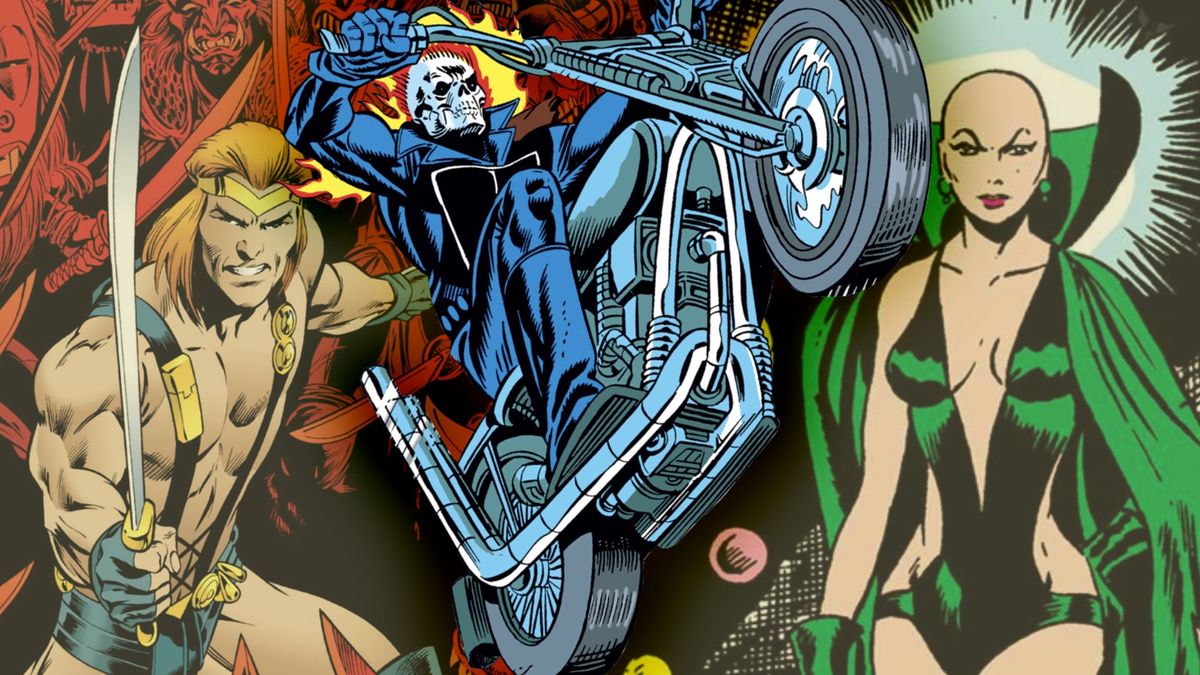
The foundation of the Marvel Universe as we know it was laid in the 1960s, and as we've already examined, while nearly all of the major Marvel superheroes created in its inaugural decade have been or will soon be adapted to the MCU, there are still a few left.
And while the '60s was the foundation, the swingin' '70s was a creatively fertile period for Marvel Comics, introducing many iconic characters to its readers that are still major players five decades later. But like the '60s group, many of those characters already have been adapted or are already in the pipeline for introduction in the Marvel Cinematic Universe.
Characters like Simu Liu's Shang-Chi ('73), Harry Styles' Eros/Starfox ('73), and Oscar Isaac's Moon Knight ('75) have made the leap in the last couple of years, and they'll be joined by Mahershala Ali's Blade ('73) in September 2024, who's technically already a part of the MCU albeit in voice only.
And the most recent additions, Gael García Bernal's Werewolf by Night ('72) and Man-Thing ('71) both debuted in Marvel Studios' recent Werewolf by Night Special Presentation.
So who are the Marvel 'best of the rest' of the '70s - the superheroes most ripe for MCU adaptation? We're going to take a look right now, but remember the ground rules here:
Spider-Man characters like Spider-Woman ('77) and Black Cat ('79) belong to Sony; we're staying away from X-Men characters like Wolverine ('74) and Storm ('75) simply because we know many are coming to the MCU eventually (including Wolverine in 2024); and we're also not counting characters that have appeared in Marvel TV productions, despite the current ambiguity of their MCU canon status, which takes characters like Luke Cage ('72), The Punisher ('74), Hellcat ('76) and Iron Fist ('74) off the table.
But there's still a long list of '70s characters ready for their close-up in Phase 7 and subsequent phases and we'll take a look at the best right now…
Comic deals, prizes and latest news
Get the best comic news, insights, opinions, analysis and more!
1970-1974
Nighthawk
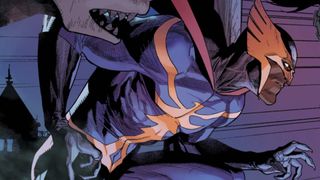
Nighthawk is kind of a cheat because Kyle Richmond technically debuted in 1969 as a supervillain, but took a hero turn in the early '70s as part of the Defenders. Kinda-sorta known as Marvel's Batman, the billionaire-turned-crimefighter has undergone many changes over the decades and introduced many Multiverse Variants, one of which currently serves as an Avenger.
Nighthawk's place in the MCU is probably as a supporting C-list type, but given his Multiversal history/profile, he can't be counted out during the current 'Multiverse Saga.'
Tigra
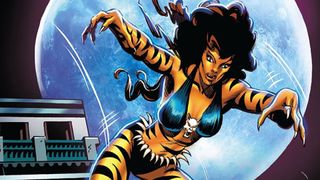
Greer Grant Nelson AKA Tigra ('72) has kicked around for 50 years now, mostly as a C-lister in the Avengers orbit. She's actually exactly what she sounds like, a woman with Tiger-like powers and for the majority of her history, a tiger-like appearance, although she had a brief career as the fully human The Cat (which would later inspire Patsy Walker to take up the Hellcat superhero identity) before her transformation into a literal tiger-lady.
An unlikely MCU addition, Tigra makes the list for the somewhat odd and brief inclusion of a character named Greer (first name only) in the first episode of Disney Plus' Hawkeye as a school friend of Kate Bishop.
Greer is something of an unusual first name and Marvel Studios was almost fully aware of its significance. So they're either seeding the reappearance of Greer as The Cat or Tigra in a story involving Kate down the line or indirectly signally MCU fans not to expect another Greer/Tigra anytime soon.
We're leaning towards the latter.
Shanna the She-Devil
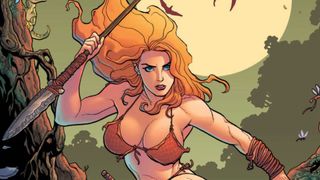
We mentioned Ka-Zar in our 60s edition so we'll have to mention his wife Shanna the She-Devil ('72) who is sort of Tarzan's Jane if Jane kicked as much jungle ass as Tarzan.
Again, we expect to see the Savage Land in the MCU eventually, and a female 'Lord of the Savage Land' might fit in with 2020s aesthetics more than the 'white male savage' trope that is Ka-Zar.
Devil Dinosaur
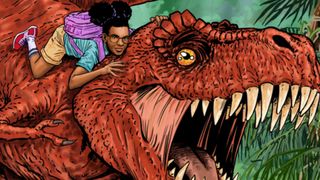
And sticking with the Savage Land for a minute the Jack-Kirby creation Devil Dinosaur ('78) would almost certainly be seen in the Savage Land, despite the fact his origins lie in a completely different reality. A blood-red Godzilla with a heart of gold, Devil Dinosaur has actually faced off against Godzilla in Marvel continuity, but that's a story for another day.
As to his companions, Moon Boy (think an articulate Chaka, if you know the reference) is almost certainly not an MCU candidate. More likely would be his companion since 2015 - Moon Girl, a 9-year-old super-genius from the contemporary mainstream Earth 616 who along with Devil Dinosaur is the star of an upcoming Marvel animated series, albeit not produced by Marvel Studios.
Moondragon
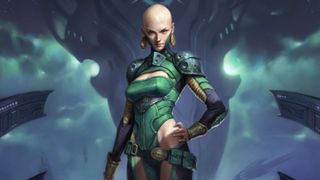
Back to the 70s, Heather Douglas/Moondragon ('72) is one of Marvel's most interesting characters from a visual standpoint, though in terms of personality and backstory she might be a little redundant with Karen Gillen's Nebula.
The daughter of Drax the Destroyer (when he was originally a human from Earth in the comic books), her potential inclusion in the MCU is tied to her childhood on Titan, Thanos's homeworld in the MCU.
She's kinda-sorta Thanos and Eros' adopted step-sister, and with Eros' introduction in the Eternals, there's a cosmic corner of the MCU she could play a role in.
She's a telepath and a martial arts expert that kicks a lot of ass and is as no-nonsense as they come in the MU.
Deathlok
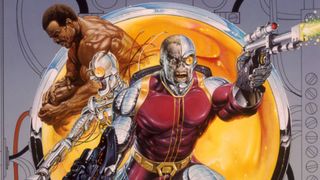
We're going to break our own rule and mention Deathlok ('74) a cool, cybernetic-super-soldier-created-from-reanimated-dead-soldier concept that was Robocop before Robocop.
Deathlok was a character in ABC's Agents of S.H.I.E.L.D. played by J. August Richards, albeit as a loosely-adapted version.
Deathlok has evolved to be more of a protocol to create cyborg super-soldiers in the Marvel Universe (sometimes for good, sometimes for bad) than any individual and many characters have become Deathloks and it seems like a concept Marvel Studios could revisit despite the AoS history.
Armor Wars (where War Machine tries to clean up technology created by Stark being used by others) seems like a strong possibility. And there are alternative timeline (AKA Multiverse) elements to the concept as well.
Ghost Rider

Finally, to wrap up the first half of the 70s, there's Ghost Rider ('72), meaning the original Johnny Blaze motor-cycle riding version.
Of course, Nicholas Cage has portrayed Ghost Rider twice in low-budget, non-MCU films, but Disney reacquired his rights years ago. That's why the muscle car-driving Robbie Reyes version of the character appeared in season 4 of Agents of S.H.I.E.L.D. played by Gabriel Luna, who got his powers by a hand-off from an unseen motorcycle-riding version of the Spirit of Vengeance.
Whatever AoS's highly-debated MCU canon status is, Johnny Blaze the original Ghost Rider and/or his immediate successor Danny Ketch make that question irrelevant. Like the Silver Surfer is for the '60s, Ghost Rider is the biggest no-brainer from the '70s.
A motorcycle-riding version of Ghost Rider will eventually appear in the MCU someday somewhere, be that in the form of Nic Cage reviving his version of the character during the 'Multiverse Saga,' or a new version of Blaze and/or Ketch. And he/they will be the most likely untapped character from the '70s to headline a movie or Disney Plus series.
1975-1979
Killraven
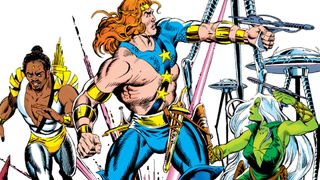
Killraven ('75) is an original Marvel sci-fi concept that sprang out of the public domain novel War of the Worlds by H.G. Wells. Besides having a kickass superhero name, Jonathan Raven was from a dystopian Earth in the Marvel Multiverse in the far-flung future year of 2018 that was invaded by Wells' Martians (but later retconned) in 2001.
Co-created by brand-name writers and artists Neal Adams, Roy Thomas, and Gerry Conway, Killraven is a sword-wielding and laser gun-toting freedom fighter whose bibliography is limited but includes some acclaimed stories over the years.
Killraven's MCU potential is perhaps in a story set in the future or alternative future of Earth, perhaps as soon as season 2 of Loki.
With the time-traveling despot Kang the Conqueror having (sort of) made his debut in Loki's first season and coming to fully menace the MCU in 2023's Ant-Man and the Wasp: Quantumania and 2025's Avengers: The Kang Dynasty, if we ever get to see a future version of Earth that falls under Kang's rule, Killraven would be a logical hero from the future mounting a resistance against him that could even potentially join the Marvel superheroes of the present-day.
White Tiger
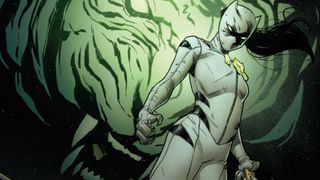
Puerto Rico's Hector Ayala/White Tiger ('75) has never been a major character, but he was Marvel Comics' first Hispanic superhero and comic book's first Latin American to headline an ongoing series (The Deadly Hands of Kung Fu).
Co-created by the legendary George Pérez, White Tiger has a similar powerset to Black Panther and gets his powers from three mystical tiger amulets.
The White Tiger persona has most recently been occupied by Hector's teenage sister Ava Ayala (2011, seen above).
Jack of Hearts
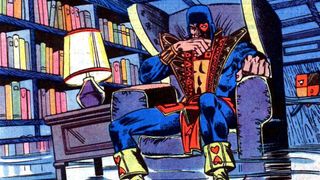
Jack of Hearts ('76) is an interesting character with a funky costume that looks straight out of a deck of cards whose cult popularity might outweigh his frankly thin comic book resume.
Whereas many Marvel superheroes of the '60s and '70s got their powers due to accidents with radiation, Jack Hart (yes, his real name) got his from an accident with a liquid energy source called 'zero fluid' created by his father. Jack would later find out his mother was from another planet which contributes to his post-zero fluid superhero physiology.
The fluid turned half his face black and gave him powers like super durability, flight, and the ability to project 'zero energy' from his hands as a concussive force.
After an extended period where he was dead, Jack has lately been hanging out with She-Hulk.
The Man Called Nova
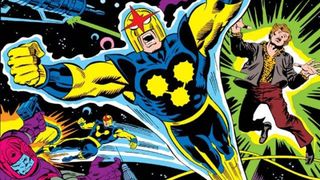
We'll mention Richard Rider/Nova despite reports Marvel Studios is developing a Nova project of some kind since Marvel hasn't confirmed the reports itself.
There has been a couple of versions of Nova including the more recent Sam Alexander, so Rider might not even be the star of the reported project, but if so, he was originally a take on the Spider-Man dynamic (a male teenager suddenly thrust into the world of superheroes), and his superpowers derived from mythology already established in the MCU in Guardians of the Galaxy Vol. 1.
The Nova Corps was the planet Xandar's defense system and in Marvel Comics Rider's origin was very much a redo of DC's Green Lantern Hal Jordan. The last surviving but dying member of the Nova Corps Rhomann Dey (played by John C. Reilly in GotG Vol. 1) selects Rider to inherit his uniform which gives him his powers.
In GotG Vol. 1 the Nova Corps didn't have superpowered suits, but the planet was decimated by Thanos in Avengers: Infinity War, albeit strictly in exposition. So a human inheriting some sort of superpower from the wiped-out Nova Corps seems to be set up on a tee just waiting for a tee time and Reilly as Rhomann Dey is probably warming up on the driving range.
Captain Britain
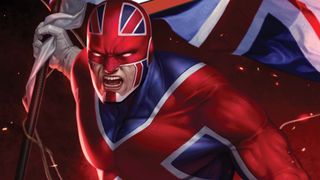
Brother and sister Brian and Betsy Braddock ('76) both originated in the British corner of the Marvel Universe, which has something of a life of its own given the Marvel UK imprint from the '70s created Marvel stories specifically and exclusively for the United Kingdom market.
Betsy was quickly established as a mutant, so we'll focus on Brian for the moment, who was selected by Merlyn (yes, that Merlyn) and his daughter Roma to be the champion of the British Isles and its people.
Marvel UK dabbled heavily in the Multiverse before Marvel Comics proper ever did (even establishing the Earth-616 designation) and Brian's duties as Captain Britain also involved him being Earth 616's defender as part of the Multiversal Captain Britain Corps, which included multiple 'Variants' of Braddock himself.
Braddock is currently Captain Avalon in the X-Men books and the Captain Britain mantle is now held by Betsy.
As we say Betsy is a mutant, with an insanely complicated history, but given her current role we have to mention her here. The Captain Britains' history with the Marvel Multiverse cannot be discounted during the 'Multiverse Saga' Phases and Betsy and/or Brian would be logical additions.
As an aside, Brian Braddock often got mentioned as a potential MCU role for Brit Henry Cavill if Warner Bros. didn't revive his Superman role, but it looks like Cavill will don the cape and 'S' (which means hope) again.
Machine Man
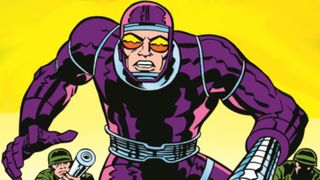
Aaron Stack/Machine Man ('77) has one of the odder Marvel Universe origins. Created as Mister Machine by Jack Kirby as part of a Marvel Comics series based on concepts from Stanley Kubrick's 2001: A Space Odyssey and the Arthur Clarke novel it was based on, he would quickly be adapted into the MU in his own series also initially written and drawn by Kirby.
Sharing some qualities with the Vision (a sentient robot who sometimes struggles to interact with humanity) Machine Man has evolved from a robotic-looking character with retractable arms and legs ala Inspector Gadget, to a nanotechnology-based being who can alter his appearance and instantly rebuild and enhance any machinery and technology he comes into contact with.
Iron Man's last armor prior to his death in Endgame was nanotechnology-based, which theoretically puts Machine Man on the table for possible inclusion in Armor Wars - especially since Machine Man most recently appeared in comics as an Iron Man supporting character.
Quasar
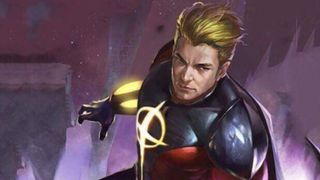
Wendell Vaughan/Quasar ('78) was something of a superhero for the 2020s created 40 years too soon. Breaking the traditional stereotype as the indomitably-willed alpha male, Wendell instead was introduced as a S.H.I.E.L.D. agent who was denied a field assignment because he lacked a 'killer instinct.'
This alternative, laid-back approach turned out to be a plus when he came into contact with the Quantum Bands, Marvel's sort of version of a Green Lantern ring. Whereas the Green Lantern ring requires fearlessness to wield it, the Quantum Bands worked better for someone with a more flexible will and not a domineering one.
With Nick Fury up in space doing Thor knows what in the MCU, seemingly recruiting characters like Monica Rambeau, the Earth-bound cosmic side of the MCU might have a place for Vaughan and his somewhat unique approach to superheroics.
And as we detailed previously, the Quantum Bands that gave him his superpowers may or may not be tied to the newly-established Ms. Marvel MCU mythology, so there are a couple of avenues open for a Quasar.
But that said, in recent years the Quasar role/custodian of the Quantum Bands has been taken up by a woman, Avril Kincaid.
Songbird
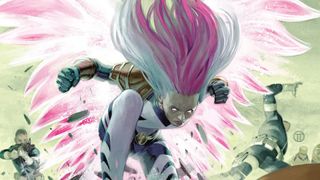
We'll mention Melissa Joan Gold/Screaming Mimi/Songbird ('79) briefly as in our 1960s edition we mentioned a couple of her Thunderbolts teammates.
Like Abner Jenkins and Erik Josten, Songbird flipped from supervillain to superhero while a member of the T-Bolts and the hero turn has mostly stuck. She was even a cast member of the fan-favorite time-travel-based Avengers Forever maxi-series as an Avenger from an alternate timeline. Or in other words, the Multiverse.
The movie version of the Thunderbolts will not reflect the original comic book line-up, but with her powers of supersonic screaming, and her original ' '70s-inspired professional wrestler look, Screaming Mimi/Songbird seems like she could be right at home as perhaps a case-of-the-week in a potential season 2 of She-Hulk, Attorney at Law.
Guardian and Alpha Flight
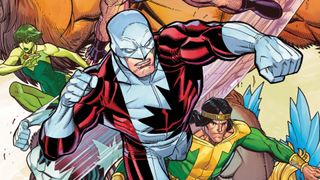
Finally, we'll end on James Hudson/Guardian ('78) and his superteam Alpha Flight ('79). Characters original to the pages of Uncanny X-Men, they've since branched off into several series of their own over the years.
More or less the Canadian Avengers, Alpha Flight characters will almost certainly show up somewhere in the MCU eventually. Aurora and Northstar, twin sister and brother are perhaps the two most interesting characters. But both are mutants and the mercurial Northstar is already part of our look at 20 characters that should make the jump from comic book to the MCU.
Walter Langkowski/Sasquatch would be a fun addition. A scientist who basically can turn into BigFoot, when he's not avoiding people taking grainy super-8 footage of him in the Canadian wilderness, he's like Professor Hulk but with full body hair.
Otherwise, Guardian is like the Canuck version of Captain America crossed with Iron Man, but without the extreme self-confidence of Steve Rogers or Tony Stark. He's an everyman who happens to be a brilliant scientist and inventor of his battlesuit (which would make him an interesting character in the alpha dog MCU) and might be a candidate to be involved in Armor Wars down the line.
I'm not just the Newsarama founder and editor-in-chief, I'm also a reader. And that reference is just a little bit older than the beginning of my Newsarama journey. I founded what would become the comic book news site in 1996, and except for a brief sojourn at Marvel Comics as its marketing and communications manager in 2003, I've been writing about new comic book titles, creative changes, and occasionally offering my perspective on important industry events and developments for the 25 years since. Despite many changes to Newsarama, my passion for the medium of comic books and the characters makes the last quarter-century (it's crazy to see that in writing) time spent doing what I love most.
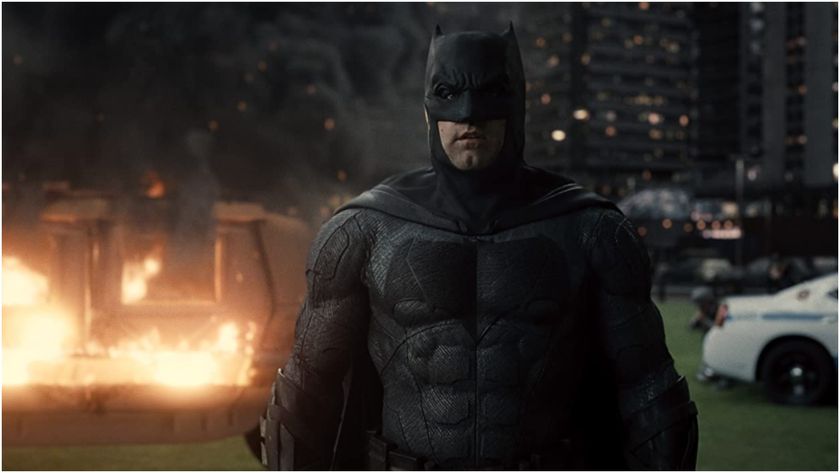
Ben Affleck reflects on the "excruciating experience" playing Batman in the Zack Snyder movies: "A lot of it was misalignment of agendas, understandings, expectations"
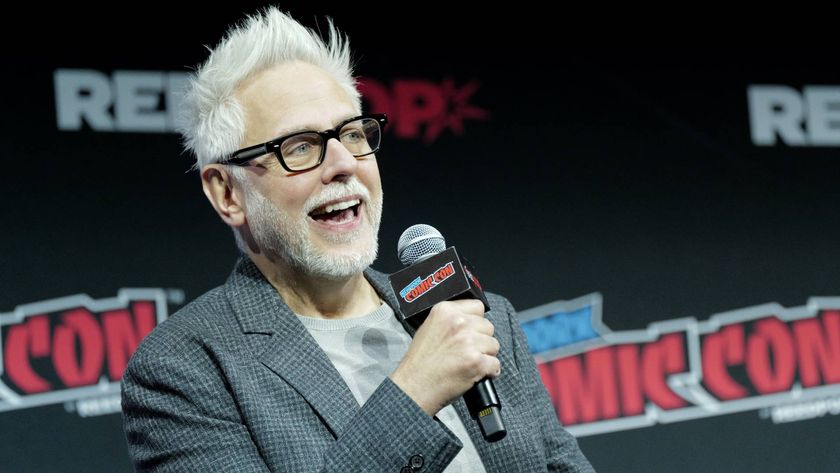
James Gunn reacts to Jason Momoa almost spoiling his Lobo costume in an interview: "I just want to profoundly thank Jason’s publicist"











